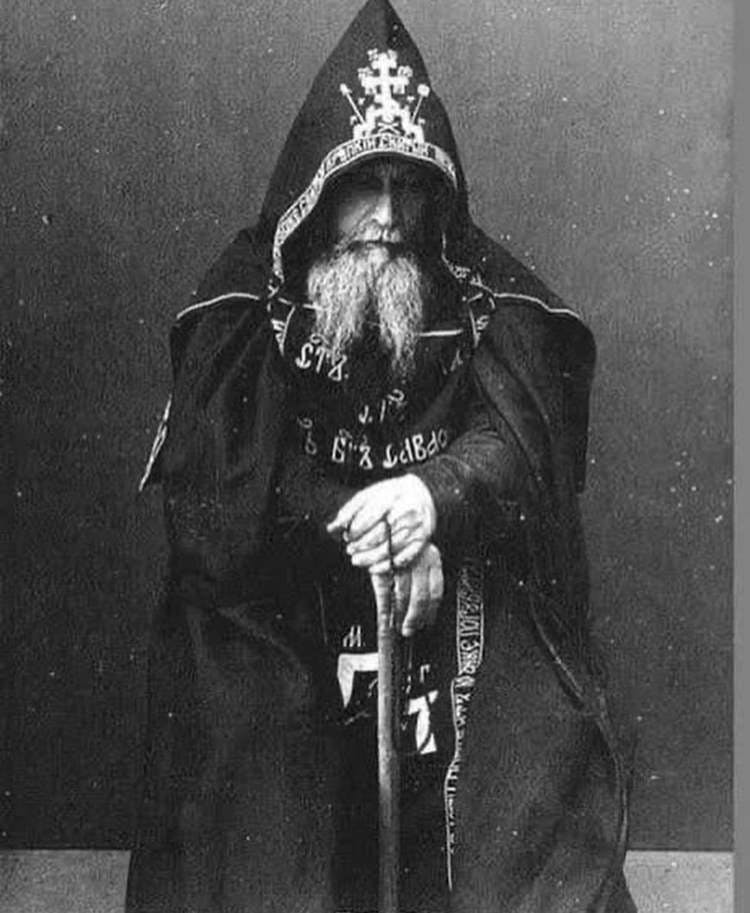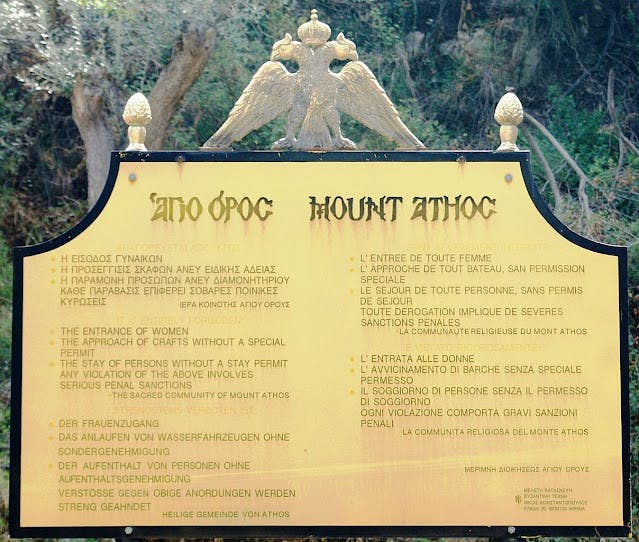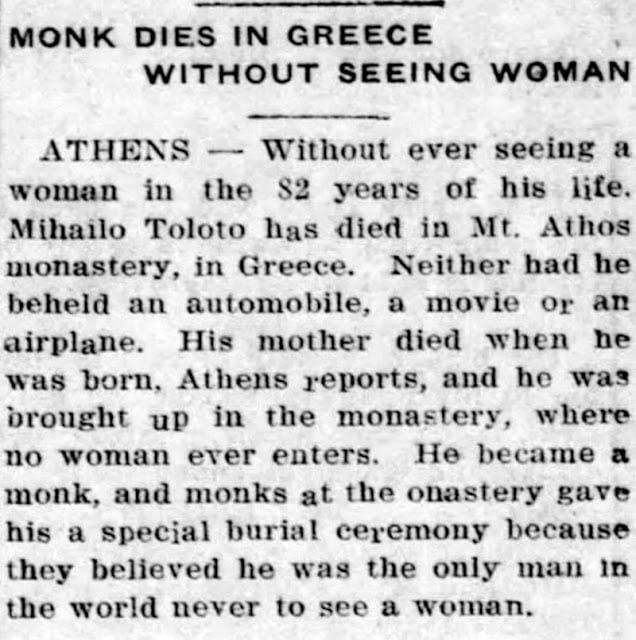Mihailo Tolotos: The Monk Who Never Saw a Woman
Hidden high in the cloud-wrapped crags of Mount Athos, Mihailo Tolotos lived one of history’s most extraordinary lives. A devoted Greek Orthodox monk, Tolotos is believed to have lived and died without ever seeing a woman — an astonishing feat of asceticism unmatched in modern history. As a result he is known as the Monk who never saw a woman. His remarkable isolation within this autonomous monastic enclave offers a fascinating glimpse into a tradition that has guarded ancient practices for over a millennium, separated from the influences of the outside world.
Though historians find limited evidence about Tolotos, his story still captivates people as an extreme example of solitude, celibacy, and separation from worldly temptations. Did Tolotos find genuine spiritual fulfillment in his stark existence? Or did deeper human longing lurk beneath his serene veneer?

Early Life of Mihailo Tolotos on Mount Athos
Mihailo Tolotos’ origins reveal little hint of his future seclusion in the sanctuary of Mount Athos. Born in 1856, his mother tragically died just four hours after giving birth. With no father coming forward, someone left the orphaned infant upon the steps of a monastery high in the mist-drenched, forested Halkidiki peninsula of Greece.
There, the Greek Orthodox brotherhood raised Tolotos inside fortified walls that modernity had not touched. His guardians instilled the virtues of austerity, prayer, fasting, and Orthodox doctrine. The boy grew into a disciple exemplifying the monks’ ascetic calling.
Mount Athos itself had sheltered devout hermits since ancient times. Its windswept slopes offered ideal isolation for those pursuing heavenly connection through denial of earthly pleasures. In 1060 AD, the Byzantine Emperor issued a charter sealing the peninsula off as a monks’ sanctuary. A rule was formally codified banning all females from entering the holy site. Even female livestock were prohibited, with the exception of certain cats needed for pest control.
Over the ensuing centuries, imposing monasteries were built across Athos’ rugged terrain. They attracted Eastern Orthodox devotees from various nationalities seeking cloistered distance from worldly sin. By Tolotos’ era, centuries of tradition permeated Mount Athos’ 20 monasteries housing thousands of monks.
Into this archaic, insulated world had the orphan Tolotos arrived. As he came of age beside Athos’ ancient stone towers, his feet never strayed beyond the only home he knew.

Life Inside Mount Athos Monasteries
Imagine a life without technology and without change. This was Tolotos’ world. Documenting monks’ daily lives was not a priority for record keepers. Thus, specific details about Tolotos’ routine activities remain sparse. Yet his dedication became legendary within the insular confines of Mount Athos.
Tolotos embraced the wooden cross necklace, simple robes, and straw hat comprising the modest monk’s uniform. His narrow bed likely stood beside dozens of counterparts in cold dormitories. Before sunrise, the clatter of a handbell ended sleep for collective prayers. Then monks proceeded to labor in kitchens, vineyards, or workshops to maintain their isolated community.
Athos monks strived to replicate the desert hermits of antiquity by breaking ties to the nonspiritual world. Fasting was routine, as was idle talk or seeing visitors. Natural landscapes inspired spiritual contemplation during outdoor periods. Silence accompanied basic nourishment at dinner. Through repetition, devotion was forged anew each day.
For Tolotos’ generation, the conveniences of electricity, modern travel, telecommunications, or entertainment remained unimaginable. Secured from modern seductions, days consisted solely of religious life. With long beard flowing, Tolotos embodied the image of sagely holiness atop Mount Athos.
Meanwhile, beyond the monastery gates, the world raced into the 20th century. Yet caught in what was basically a medieval time capsule, Tolotos remained oblivious. Neither cars nor airplanes ever passed before his eyes in his 82 years. One particular element of modern life was notably missing – he supposedly never saw a female form.

Avaton: Why Women Were Banned from Mount Athos
Banning women from Mount Athos always targeted more symbolic spiritual threats than practical ones. Yet reasons based on Eve’s Original Sin were convincing when they created the “Avaton” rule.
Through the centuries, determined intruders occasionally tested the Avaton’s defenses. But any breaches proved rare enough not to undermine traditions around Mount Athos in feminine mystery.
Thus, Tolotos’ possible lifelong exclusion from female exposure didn’t raise eyebrows within the Avaton’s secluded community. Monks moving through the hallways displayed no visual cues for indentifying gender. Nor did icon paintings around them typically depict female saints with female characteristics. The Avaton itself loomed as the biggest maternal symbol instead.
There is evidence that suggests that the Avaton’s veil was secretly lifted during Tolotos’ tenure. In the 1920s, French historian Maryse Choisy disguised herself as a sailor to sneak inside Mount Athos out of curiosity. A decade later, Aliki Diplarakou – crowned Miss Europe 1926 – briefly infiltrated the forbidden land.
Might Tolotos have seen either beautiful intruder, failing to recognize their femininity? His reaction, if any, goes unrecorded. But the mere possibility shows that the Avaton’s defenses weren’t as secure as thought throughout history.
When Tolotos died at age 82 in October 1938, his fellow monks gave him a special funeral. They honored him because they believed he had never seen a woman his entire life. The monks respected Tolotos for staying true to his vows despite the few women who had secretly entered Mount Athos during his lifetime.

Legacy of Mihailo Tolotos and Mount Athos’ Traditions
History has little certainty to offer about Mihailo Tolotos the man versus the myth. His name evokes admiration, pity, or mere fascination today. But the obscurity enveloping his life’s finer details now seems permanent.
Perhaps modest contentment genuinely flowed for this recluse locked inside rituals and restraint under Mount Athos’ paternal protection. Or did private struggles arise over forfeiting life’s experiences beyond the monastery walls? We shall never truly know.
The greater narrative is Mount Athos itself persisting as an Eastern Orthodox citadel resisting the tides of change. The 20 resident monasteries still shelter serious devotees renouncing earthly bonds – including relationships with wives or daughters.
Each silent monk moving across ancient flagstones or tending lush gardens carries the metaphorical torch first kindled over 1000 years ago. They remain successors practicing time-honored techniques for blocking worldly distractions on paths toward spiritual enlightenment.
Among these monastic seekers stand heirs to Tolotos’ legacy guarding the Avaton’s covenant. For somewhere within Athos’ mystic aura resides the potency to sustain such ardent commitment against creeping modern doubt. All these generations have relied on that spiritual strength to navigate life without feminine influence – real or ethereal.
So whether Tolotos truly died having never glimpsed a female face now seems secondary to how Mount Athos’ all-male traditions have endured for centuries. For here persists a sheltered brotherhood thriving through self-denial, largely untouched by passing decades or cultural trends.
Their hallowed ritual role could scarcely exist beyond these shores. Thus may Mihailo Tolotos’ extraordinary story continue to symbolize the unique dedication of Mount Athos monks to their ancient way of life.
Frequently Asked Questions About Mihailo Tolotos
Who was Mihailo Tolotos?
Mihailo Tolotos was a Greek Orthodox monk who lived his entire life on Mount Athos without ever seeing a woman. Born in 1856 and dying in 1938 at age 82, he was reportedly orphaned shortly after birth and raised entirely within the all-male monastic community.
Why are women banned from Mount Athos?
Mount Athos enforces the “Avaton” rule, which prohibits women from entering to maintain an environment of spiritual focus and celibacy. The tradition dates back to Byzantine times and is based partly on the dedication of the mountain to the Virgin Mary, who is considered the only female presence needed.
Is Mihailo Tolotos’ story real?
While historical details are sparse, his story has been documented in monastic tradition and newspaper accounts from the time of his death. While some aspects may have been embellished over time, evidence suggests the core story is based on real events.
How do monks live on Mount Athos today?
Modern monks on Mount Athos continue to follow ancient traditions, though with some concessions to modernity. They maintain a strict daily schedule of prayer, work, and study, living simply and avoiding most modern technologies. The ban on women remains strictly enforced, making it one of the last places on Earth with such a prohibition.
Can visitors go to Mount Athos?
Male visitors can visit Mount Athos with special permits called “diamonitirion,” which are limited and must be applied for in advance. Only 10 non-Orthodox visitors are allowed per day, and stays are typically limited to four days. Women remain prohibited from visiting under any circumstances.

 Additional Facts
Additional Facts
20
Twenty distinct monasteries dot Mount Athos, their unique architecture and character preserving centuries of religious and cultural heritage.



